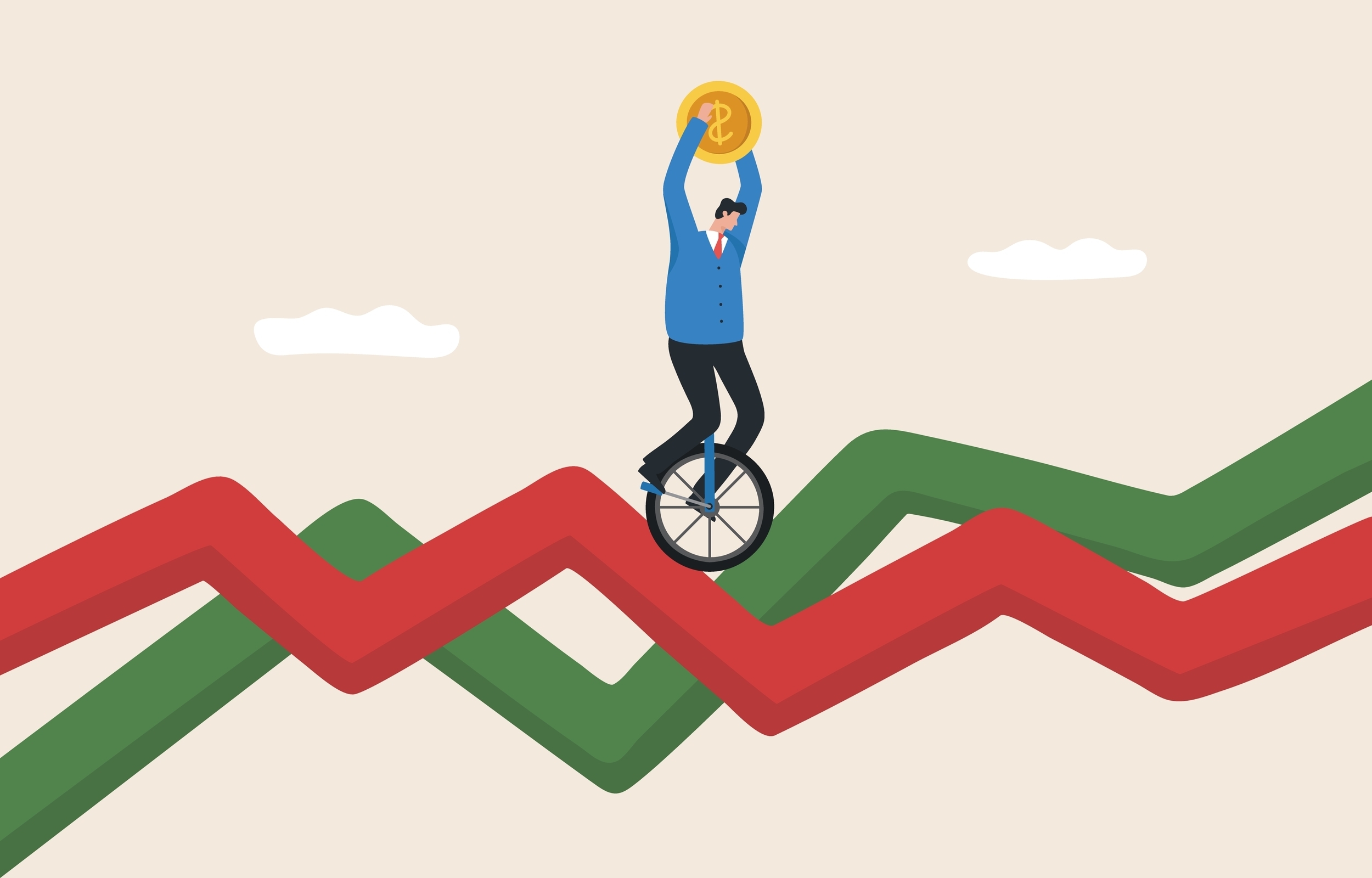Should Crypto Be in Your Retirement Plan?

Ever feel overwhelmed by all the chatter about cryptocurrency and wonder if it should be part of your retirement plan? You’re not alone. With so many investment options and unpredictable markets, figuring out what’s right can be tough. Together, let’s cut through the confusion and see if adding crypto to your retirement strategy makes sense for you.
The Challenge of Retirement Planning
Planning for retirement can feel overwhelming. Between the countless investment options and unpredictable markets, it’s tough to know what’s right.
Cutting Through the Confusion
I’m here to break down the key things to consider when thinking about crypto for retirement. Together, we’ll look at the bigger picture.
Providing a Clear Path Forward
By the end, you’ll have a better grasp on whether crypto fits into your retirement plan. Ready to see where this journey takes us?
Understanding Cryptocurrency and Retirement Plans

Let’s take a closer look at what cryptocurrency is and how it might fit into your retirement planning.
What Makes Crypto Unique?
Cryptocurrency is a type of digital currency that uses cryptography for security and operates on a technology called blockchain. Unlike traditional money issued by governments, crypto isn’t controlled by any central authority. This decentralization means transactions can happen directly between users without intermediaries like banks.
What sets crypto apart is its transparency and security. Every transaction is recorded on a public ledger, making it nearly impossible to alter past records. Plus, many cryptocurrencies have a limited supply, which can affect their value differently than currencies that can be printed endlessly.
As Satoshi Nakamoto, the mysterious creator of Bitcoin, once said:
“The root problem with conventional currency is all the trust that’s required to make it work.”
This quote highlights why some people are drawn to crypto—they like the idea of a financial system not solely based on trust in institutions.
Why Consider Crypto for Retirement?
You might be wondering why some folks are thinking about adding crypto to their retirement plans. Here are a few reasons:
- Potential for Growth: Cryptocurrencies like Bitcoin and Ethereum have seen significant increases in value over the past decade. Although past performance doesn’t guarantee future results, some investors are intrigued by the possibility of high returns.
- Diversification: Including different types of assets in your portfolio can help spread risk. Crypto offers a new asset class that behaves differently from stocks and bonds.
- Belief in Technology: If you believe blockchain technology is the future, investing in crypto allows you to be part of that innovation.
For some, it’s not just about the potential profits but also about supporting a financial revolution that aligns with their values.
Current Options for Investing in Crypto Through Retirement Accounts
If you’re considering crypto for your retirement savings, there are a few ways to get started:
- Self-Directed IRAs: Some companies offer self-directed Individual Retirement Accounts that let you invest in a variety of assets, including cryptocurrencies. With these accounts, you have more control but also more responsibility.
- Bitcoin ETFs and Trusts: Exchange-traded funds (ETFs) and investment trusts that hold crypto can be included in some retirement accounts. These products let you invest in crypto without holding it directly.
- Crypto-Enabled 401(k)s: Recently, companies like Fidelity have started to offer the option to include Bitcoin in 401(k) plans. This is still new and not widely available, but it’s a sign of changing times.
Keep in mind that investing in crypto through retirement accounts can come with additional fees and risks. It’s important to read the fine print and understand how these investments fit into your overall plan.
Curious about the potential upsides of adding crypto to your retirement strategy? Let’s explore the possible benefits that might make it worth considering.
The Upside: Potential Benefits of Crypto in Your Retirement Plan

I’ve been thinking about how adding crypto to a retirement plan could offer some interesting advantages. Let’s take a look at some of the benefits that might make crypto a valuable addition to your portfolio.
Diversifying Your Investments
Diversification is a key principle in investing. By spreading our investments across different assets, we can potentially reduce risk. Including crypto in your retirement portfolio could add a new layer of diversification because it’s not directly tied to traditional markets like stocks or bonds.
For example, while the stock market might be affected by certain economic events, crypto can move differently due to its unique factors. This means that when one market is down, the other might not be. By having a mix of assets, we might balance out the ups and downs, aiming for more stable overall returns.
Potential for High Growth
One of the things that gets me excited about crypto is its potential for significant growth. We’ve all heard stories of how cryptocurrencies like Bitcoin and Ethereum have skyrocketed in value over the years. Early adopters saw substantial returns on their investments.
While past performance doesn’t guarantee future results, including a small portion of crypto in your retirement plan could offer the chance for higher returns compared to more traditional investments. It’s about considering the possibility of growth that could boost your retirement savings in the long run.
Staying Ahead with Emerging Technologies
Embracing crypto isn’t just about potential financial gains; it’s also about being part of a technological revolution. Blockchain technology, which underpins cryptocurrencies, is transforming industries from finance to supply chain management.
By including crypto in your retirement plan, you might position yourself to benefit from future technological advancements. It’s like being an early investor in the internet or mobile technology. You’re not only investing in assets but also in the innovation that could shape our future.
“The secret of getting ahead is getting started.” – Mark Twain
This quote resonates with me because sometimes taking that first step into something new can open up possibilities we hadn’t imagined.
So, we’ve looked at some potential benefits of adding crypto to your retirement plan. But what about the other side of the coin? Are there risks we need to be mindful of? Understanding both the upsides and downsides is crucial in making informed decisions. Let’s continue this journey and see what challenges might lie ahead.
The Downside: Risks of Including Crypto

As exciting as cryptocurrency can be, it’s important to look at the other side of the coin.
High Volatility
One thing that’s hard to ignore is how wildly crypto prices can change. For example, Bitcoin reached nearly $65,000 in April 2021, then dropped to around $30,000 just a few months later. If your retirement funds are tied up in such a roller coaster, it could be nerve-wracking.
Imagine watching a significant portion of your nest egg swing up and down like that. It’s like riding a financial roller coaster without knowing when the next dip or climb will come. Studies have shown that high volatility can lead to stress and emotional decision-making, which isn’t ideal when planning for retirement.
Regulatory Uncertainty
Another factor to consider is that the rules around cryptocurrency are still being written. Governments worldwide are figuring out how to regulate crypto, and new laws could change the landscape overnight. For instance, if certain regulations make it harder to trade or hold crypto, your investments could be affected.
I remember when China announced a crackdown on crypto mining and transactions; the market reacted sharply. Such regulatory shifts can have a big impact, and it’s something to keep in mind.
Security and Storage Concerns
Keeping your crypto safe isn’t as straightforward as traditional investments. There’s the risk of hacking, scams, or even losing access to your digital wallet. If you misplace your private keys, your funds could be gone forever.
There have been stories of people losing fortunes because they forgot their passwords or fell victim to phishing attacks. It’s a sobering thought that unlike a bank, there’s often no way to recover lost crypto.
Does It Align with Retirement Goals?
Finally, it’s worth thinking about whether crypto fits with your personal retirement objectives. Are you aiming for stable, predictable growth, or are you open to taking bigger risks for potentially higher rewards?
As legendary investor Warren Buffett once said,
“Risk comes from not knowing what you’re doing.”
It’s essential to ask yourself if you’re comfortable with the risks that come with crypto, especially when your future livelihood is at stake.
So, is including crypto in your retirement plan the right move? It’s a tough question, and in the next part, we’ll explore how to approach this decision thoughtfully.
How to Thoughtfully Include Crypto in Your Retirement Plan

So, you’re considering adding cryptocurrency to your retirement plan? That’s an exciting thought, and it’s important to approach it with care. Let me share some ways you can thoughtfully include crypto in your retirement strategy.
Start Small with Allocation
One piece of advice I often hear from financial experts is to start small. Cryptocurrencies can be unpredictable, so limiting them to a small portion of your portfolio can help manage risk. For instance, you might allocate just 5% or less of your retirement investments to crypto. This way, you can participate in potential growth without exposing your savings to excessive volatility.
Learning from Trusted Resources
Educating yourself is a crucial step before making any investment decisions. Websites like Investopedia offer insights into the pros and cons of holding crypto in a 401(k). They discuss important factors like market volatility, regulatory issues, and how crypto might fit into a responsible retirement plan.
You might also find it helpful to read about others’ experiences. On Reddit, there’s an interesting discussion where people share their thoughts on using Bitcoin for retirement. Hearing real stories can provide valuable perspectives and help you make a more informed decision.
Using Self-Directed Retirement Accounts
If you’re serious about including crypto in your retirement plan, self-directed IRAs or 401(k)s could be an option. These accounts give you more control over your investments, allowing you to include alternative assets like cryptocurrencies. Here’s a helpful guide from Investopedia that explains how cryptocurrency can be included in retirement accounts.
Remember, self-directed accounts come with additional responsibilities. You’ll need to conduct thorough research and possibly deal with extra fees. It’s essential to understand how these accounts work and whether they suit your investment style.
Focus on Long-Term Strategies
When integrating crypto into your retirement plan, thinking long-term is key. Cryptocurrencies can experience significant short-term fluctuations, but they may offer growth potential over a longer horizon. By adopting a long-term mindset, you might better navigate the market’s ups and downs.
Consider setting clear investment goals and sticking to them, rather than reacting to daily market changes. This approach can help you stay focused on your retirement objectives while exploring the potential benefits of crypto.
But how do you know if crypto truly fits into your retirement plan? Let’s delve deeper into that in the next section.
Making the Decision: Is Crypto Right for Your Retirement?

So, after going through the upsides and downsides of including cryptocurrency in your retirement plan, you might still be on the fence. I get it—it’s a big decision! Let’s break it down further to see if crypto aligns with your personal retirement goals.
Assessing Your Comfort with Risk
First things first, how do you feel about risk? Cryptocurrency is known for its volatility. Prices can soar one day and take a nosedive the next. If watching those dramatic swings makes you uneasy, it might be a sign to proceed with caution.
On the other hand, if you’re comfortable with the possibility of significant fluctuations in exchange for potential high returns, crypto could have a place in your retirement portfolio. It’s all about balancing your tolerance for risk with your investment choices.
Aligning with Your Financial Goals
Think about what you want your retirement to look like. Are you aiming for steady, reliable income, or are you hoping for substantial growth that could accelerate your savings? Cryptocurrency might offer growth potential, but it doesn’t typically provide the steady income that bonds or dividend-paying stocks might offer.
Also, consider your timeline. If you’re decades away from retirement, you might have more room to take on risk. But if retirement is just around the corner, preserving what you’ve saved could be more important than chasing high returns.
Seeking Professional Guidance
Sometimes, it helps to chat with a financial advisor. They can offer personalized advice based on your unique situation. An advisor can help you weigh the pros and cons we’ve discussed and see how crypto could fit into your overall strategy.
Remember, it’s okay to ask questions and get support. Making informed decisions is key to feeling confident about your retirement plan.
Final Thoughts
At the end of the day, including cryptocurrency in your retirement plan is a personal choice. It comes down to your comfort with risk, your financial goals, and how you envision your future. My aim here has been to equip you with the insights to make the decision that’s right for you.
If you decide to venture into crypto for retirement, start small and stay informed. And if you choose to stick with traditional investments, that’s perfectly okay too. What’s important is that you’re taking steps toward a secure and happy retirement.
Feel free to share your thoughts or questions below. We’re all navigating this evolving landscape together, and your perspective could help others on the same journey.
